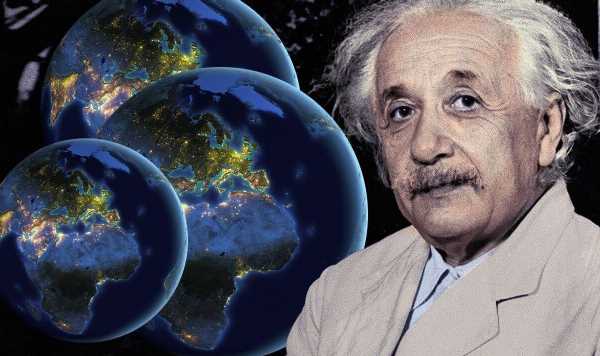
Time travel: Documentary looks at Stephen Hawking’s theory
We use your sign-up to provide content in ways you’ve consented to and to improve our understanding of you. This may include adverts from us and 3rd parties based on our understanding. You can unsubscribe at any time. More info
From HG Wells’s “The Time Machine” to the Avengers: Endgame, travelling through time has been a hallmark of science fiction for over a century. Part of its appeal has been that famous physicists such as Albert Einstein have come up with theories that explain the phenomena of time in such a way that it doesn’t rule out the possibility of time travel. Einstein’s theory of special relativity proposes that time moves relative to an observer and is an illusion.
In his 1905 theory, the combined space and time into a singular entity known as “spacetime”, which physicists over the next century have verified.
In an article published in the Conversation, Assistant Professor of Physics at Brock University, Barak Shoshany, wrote about the possibility of time travel- with a catch.
One of the biggest obstacles to time travel is the practical requirement for “exotic matter”, which is matter with negative energy, unlike the matter around us, which consists of positive energy.
However Prof Shoshany added: “There is no proof that it is impossible to create exotic matter in sufficient quantities.


“Furthermore, other equations may be discovered that allow time travel without requiring exotic matter.”
Another obstacle is the possibility of time paradoxes, where an action taken in the past could have ripple effects in the present that undo the need to time travel in the first place.
A classic example of this is the famous “Grandfather paradox”, where experts ponder over whether a time traveller would cease to exist if he went back in time to kill his grandfather when he was young.
Prof Shoshany added: “In physics, a paradox is not an event that can actually happen — it is a purely theoretical concept that points towards an inconsistency in the theory itself.

“In other words, consistency paradoxes don’t merely imply time travel is a dangerous endeavour, they imply it simply cannot be possible.”
Theoretical physicist Igor Dmitriyevich Novikov attempted to resolve the issue of time travel paradoxes with a self-consistency conjecture, which “essentially states that you can travel to the past, but you cannot change it.”
However, Prof Shoshany, along with his students Jacob Hauser and Jared Wogan studied time travel, and in a recent work found there are time travel paradoxes that Novikov’s conjecture cannot resolve.
He wrote: “We showed that allowing for multiple histories (or in more familiar terms, parallel timelines) can resolve the paradoxes that Novikov’s conjecture cannot.
DON’T MISS:
Russia’s ‘only oil pipeline to EU’ in flames – 3 countries face crisis [REVEAL]
Forget Satan 2! US £157bn project can wipe out Putin’s missile [ANALYSIS]
Putin facing brink: Exiled oligarch says EU sanctions would be ‘blow’ [INSIGHT]


“In fact, it can resolve any paradox you throw at it.”
According to his theory, when a person exits a time machine, they land in a different timeline, where they can do whatever they want, including destroying their time machine five minutes before they were supposed to use it.
In this theory, changes to this new timeline would have no effect on the original timeline.
He continued: “After working on time travel paradoxes for the last three years, I have become increasingly convinced that time travel could be possible, but only if our universe can allow multiple histories to coexist.”
The team of researchers are now looking to formulate a concrete time travel theory that abides by the law of general relativity.
He added: “Of course, even if we manage to find such a theory, this would not be sufficient to prove that time travel is possible, but it would at least mean that time travel is not ruled out by consistency paradoxes.”
Source: Read Full Article